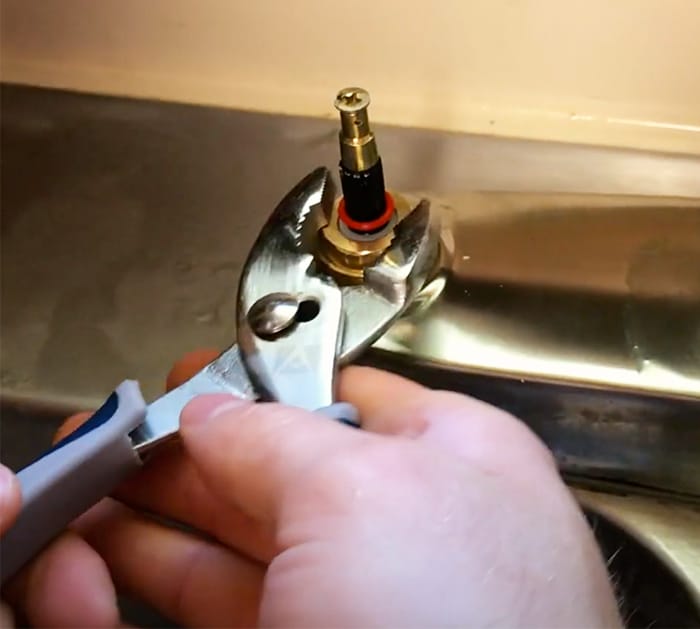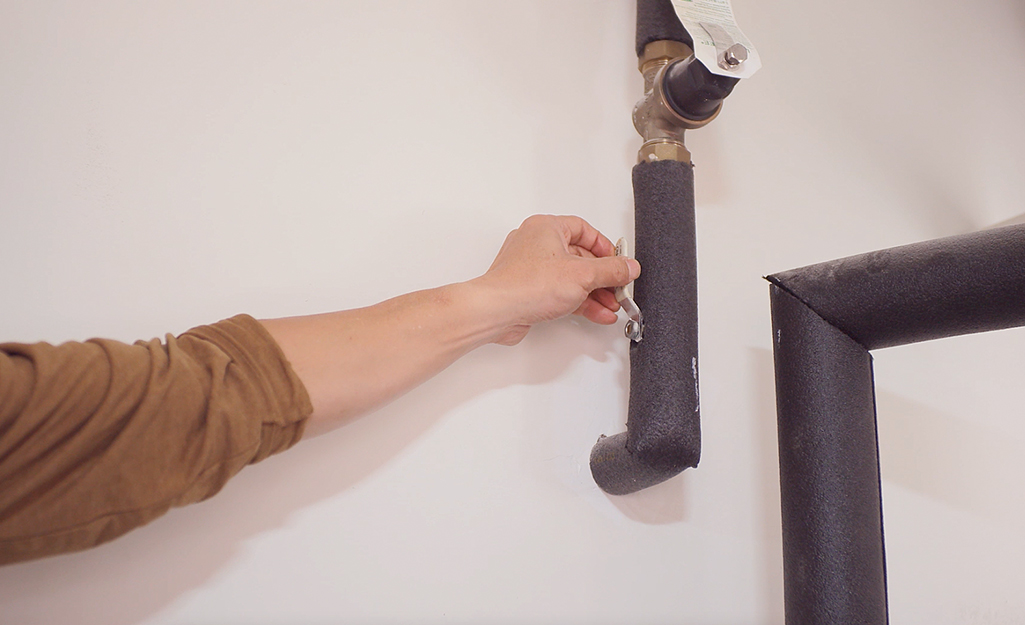Why It's Crucial to Mend a Leaking Faucet
Why It's Crucial to Mend a Leaking Faucet
Blog Article
This article below on the subject of Water Dripping from Faucet: Why and How to Fix is definitely remarkable. You should see for yourself.

Dripping faucets could look like a small inconvenience, however their impact exceeds just the annoyance of the audio. From drainage to incurring unneeded economic prices and health and wellness risks, disregarding a leaking tap can result in different effects. In this write-up, we'll look into why it's crucial to address this common family problem immediately and successfully.
Wastefulness of Water
Environmental Influence
Leaking taps add significantly to water wastefulness. According to the Environmental Protection Agency (EPA), a single faucet leaking at one drip per secondly can squander more than 3,000 gallons of water annually. This not just stress water resources however likewise impacts ecological communities and wildlife dependent on them.
Financial Costs
Increased Water Bills
Beyond the environmental influence, trickling faucets can inflate water costs substantially. The gathered waste gradually converts right into greater energy costs, which can have been avoided with timely repairs.
Possible Residential Or Commercial Property Damage
Furthermore, prolonged dripping can bring about harm to fixtures and surfaces bordering the tap. Water build-up can cause staining, rust, and even architectural problems if left ignored, causing added fixing expenses.
Health and wellness Concerns
Mold And Mildew and Mold Growth
The constant visibility of moisture from a dripping faucet creates a perfect environment for mold and mildew and mildew growth. These fungi not just jeopardize interior air top quality but additionally position health and wellness risks, especially for individuals with breathing conditions or allergies.
Waterborne Illness
Stagnant water in trickling faucets can end up being a breeding ground for bacteria and other virus, raising the threat of waterborne conditions. Contaminants such as Legionella germs prosper in stagnant water, possibly leading to severe health problems when ingested or inhaled.
DIY vs. Specialist Fixing
Pros and Cons of DIY Repair Service
While some might try to deal with a leaking faucet themselves, DIY repairs come with their own collection of obstacles. Without correct knowledge and tools, do it yourself attempts can worsen the issue or cause incomplete fixings, extending the problem.
Benefits of Working With a Specialist Plumber
Working with an expert plumber makes certain that the underlying source of the trickling faucet is resolved properly. Plumbings have the expertise and equipment to identify and repair tap problems efficiently, conserving time and decreasing the threat of more damages.
Step-by-Step Guide to Fixing a Dripping Tap
Tools Called for
Before attempting to repair a leaking tap, collect the essential tools, including a flexible wrench, screwdrivers, substitute components (such as washing machines or cartridges), and plumber's tape.
Usual Tap Issues and Their Solutions
Recognize the type of tap and the details issue triggering the drip. Common issues include damaged washing machines, corroded shutoff seats, or malfunctioning O-rings. Describe producer directions or online tutorials for detailed advice on repair services.
Safety nets
Regular Maintenance Tips
To stop trickling faucets, do regular maintenance such as cleaning aerators, checking for leakages, and replacing damaged components immediately. Additionally, take into consideration installing water-saving devices or updating to extra effective components.
Relevance of Prompt Services
Addressing leaking faucets as soon as they're observed avoids additional water waste and prospective damage, inevitably saving both water and money in the long run.
Impact on Building Worth
Perception of Well-Maintained Building
Keeping a property in good condition, consisting of attending to upkeep concerns like dripping faucets, boosts its regarded value and desirability among prospective customers or tenants.
Impact on Resale Value
Characteristics with properly maintained plumbing fixtures, consisting of taps, command higher resale values in the realty market. Attending to leaking faucets can contribute to a favorable impression throughout property assessments and arrangements.
Environmental Duty
Specific Contribution to Preservation
Taking obligation for dealing with dripping taps lines up with broader efforts towards water preservation and ecological sustainability. Every person's activities jointly make a significant effect on maintaining valuable sources.
Lasting Living Practices
By focusing on timely repair work and embracing water-saving practices, individuals contribute to lasting living methods that profit both present and future generations.
Conclusion
Addressing a trickling faucet goes beyond plain ease; it's a crucial step towards preserving water, lowering economic expenses, and protecting wellness and property. Whether through do it yourself repair services or specialist help, taking action to deal with dripping taps is a little yet impactful way to advertise liable stewardship of sources and contribute to a much healthier, a lot more lasting future.
How to Fix a Dripping or Leaky Faucet
A leaking faucet is one of the most common problems that homeowners encounter, but it being commonplace doesn’t make it any less annoying. The constant drip drip drip of a leaking bathtub faucet, showerhead, or sink tap can disturb your home’s serenity. Left neglected, a dripping faucet can also result in higher water bills and discoloration or mold growth in your sink or plumbing fixtures.
Fortunately, you don’t have to be a trained plumber to know how to stop a dripping faucet. With some basic tools, replacement parts, and a little patience, leaky faucet repair is a breeze. In this article, we’ll explain what causes dripping faucets and how you can fix them.
What Causes a Leaking Faucet?
Kitchen and bathroom faucets come in all manner of designs, but most involve some combination of valves, O-rings, seals, and washers. The O-ring is usually the weakest link, but any one of these pieces can wear down over time. Heat, moisture, temperature fluctuations, minerals, mold, and movement can contribute to warping and corrosion, breaking the watertight seal. This just comes with the territory of being a homeowner. Everything is always subject to wear and tear, and some component parts of your appliances and fixtures need to be replaced on occasion. At least replacement O-rings are cheap!
More rarely, dripping faucets can be a symptom of excessively high water pressure. Were this the case in your home, you would probably notice that the leak is not isolated to one faucet. Water pressure issues are harder to resolve on your own. We recommend contacting a professional plumber if you suspect your water pressure is too high.
How to Fix a Dripping Faucet
Pipe wrench or monkey wrench Allen wrench set Screwdrivers Old towel or rag Shut off the water.
Before you do anything, you need to turn off the water to keep from drenching your kitchen or bathroom. You should find a valve under the sink and against the wall. Once you’ve turned this valve, try turning the faucet on to confirm that the water source has been cut off.
If you can’t locate your local valve for the faucet you’re working on, you can always shut off the water to the house at the main valve. Of course, this will prohibit anyone from using the sinks, showers, or toilets while you’re working on the faucet that’s giving you trouble.
Plug or block the drain.
You’ll be disassembling the faucet and removing some small bits of hardware. Plug the drain with a stopper or rag to avoid the possibility of a small screw falling into your P-trap.
Take apart the faucet assembly.
There are several varieties of kitchen and bathroom faucets, each with its own manner of assembly. For detailed instructions on how to disassemble your faucet, you can refer to the fixture’s manual or contact the manufacturer. If you know whether you have a ball, disc, cartridge, or compression faucet, you can find detailed schematics online.
In general, you need to begin by removing the faucet handles. You might notice a small screw that you’ll need to remove with a screwdriver or Allen wrench. If you don’t see any visible securing hardware, it’s likely hidden under a decorative cap that can be unscrewed or popped off with flathead screwdriver.
Remove each piece methodically, consulting a schematic when necessary. Take notes or arrange the pieces in such a way to make it easier to correctly reassemble the faucet later.
Remove the cartridge.
Once you’ve removed the handles and securing hardware, you should be able to remove the valve cartridge or stem. Some cartridges will slide right out. Other faucet models will require you to loosen a nut with a pipe wrench before you can remove the valve stem.
Examine the exposed hardware.
With the cartridge or stem removed, inspect the component parts. Check the rubber O-rings for wear and tear. Also examine the seat washer for corrosion or other damage. These pieces are usually the responsible parties for a dripping faucet, but it’s worth inspecting the other component parts while you have the faucet disassembled.
Find replacement parts.
Once you’ve identified which faucet component has failed, find an identical replacement. Your local hardware store should have O-rings, seat washers, and other standard components in stock. If you have a luxury or uncommon faucet, you may have to contact the manufacturer for a replacement part.
It’s a good idea to take your old parts with you to the hardware store so you can compare them with the store’s inventory and be sure you’re purchasing the correct replacement.
Reassemble the faucet.
With your new parts in hand, reconstruct the faucet and handles. Don’t be tempted to overtighten screws or nuts. You might think this could create a better seal, but it can instead damage or bend a delicate part of the assembly and create a new problem for you.
Turn on the water and test the faucet.
The only thing left to do is test your work. Unplug the sink, turn the water back on, and try the faucet. Congratulate yourself on a job well done!
https://www.libertyhomeguard.com/how-to-fix-a-dripping-or-leaky-faucet/

As a fervent person who reads on How to Fix a Dripping or Leaky Faucet , I was thinking sharing that piece of content was really helpful. Do you know about another individual who is sincerely interested in the subject? Why not share it. Thank you for your time invested reading it.
Report this page